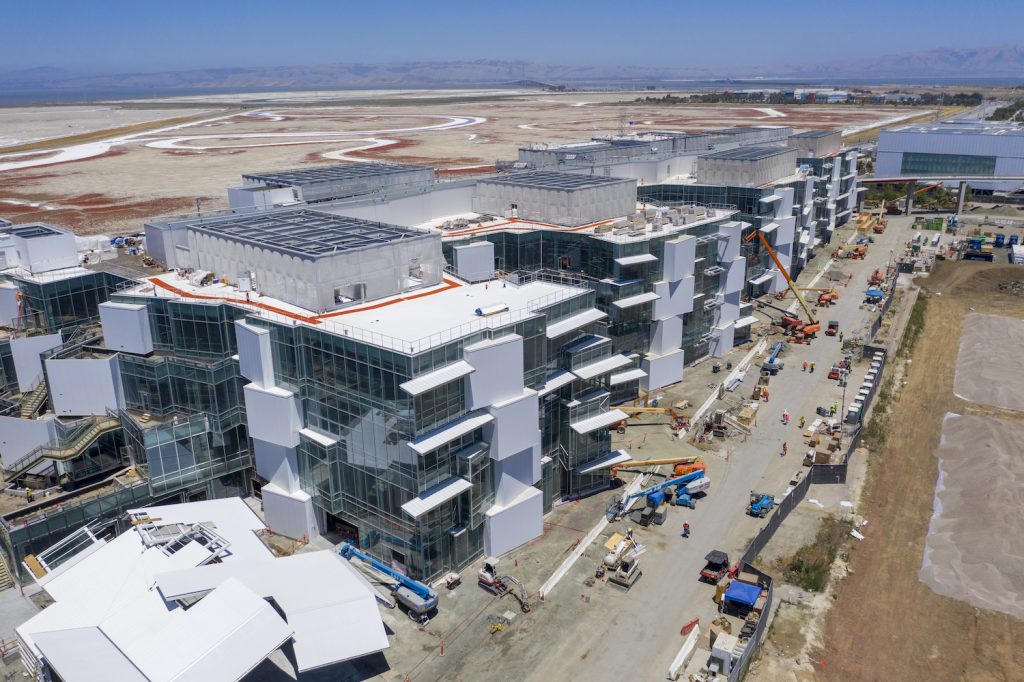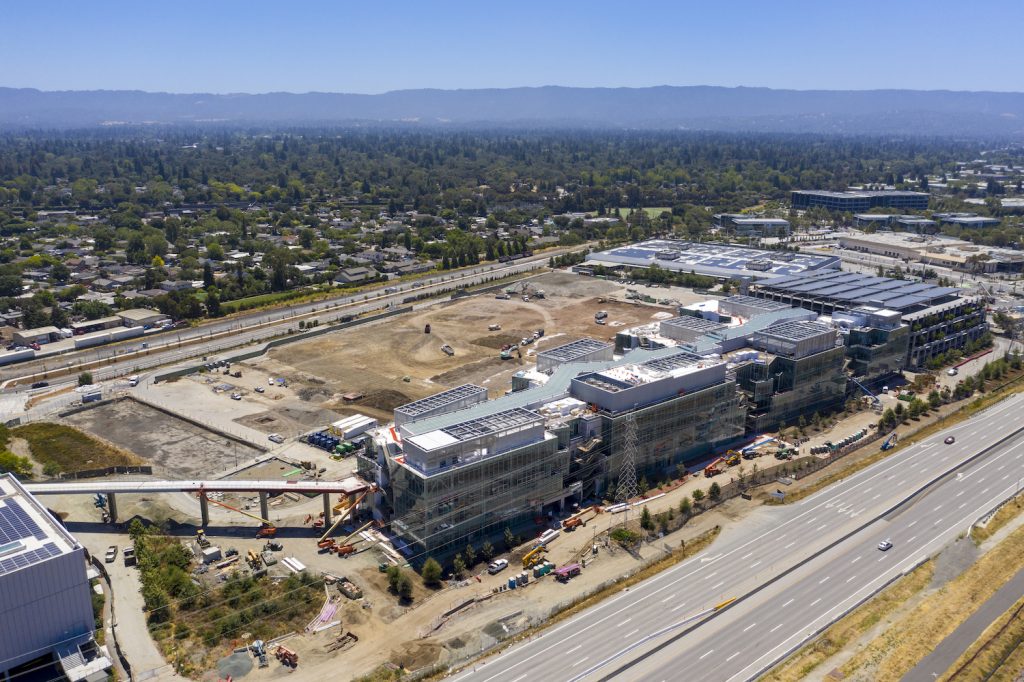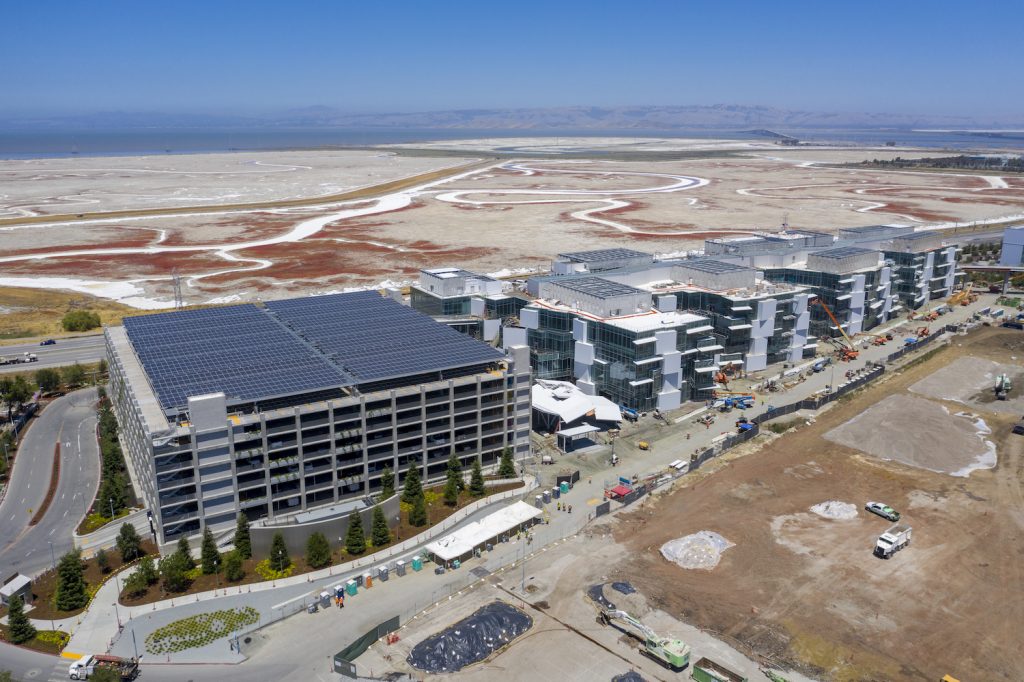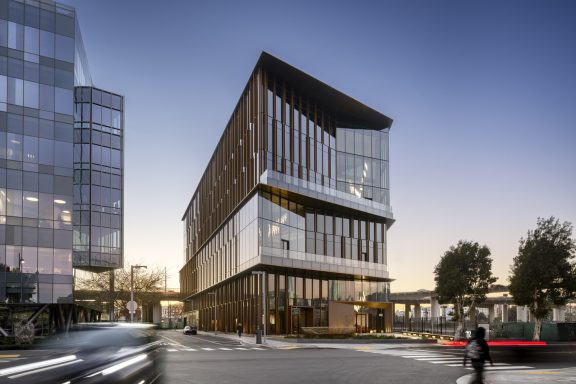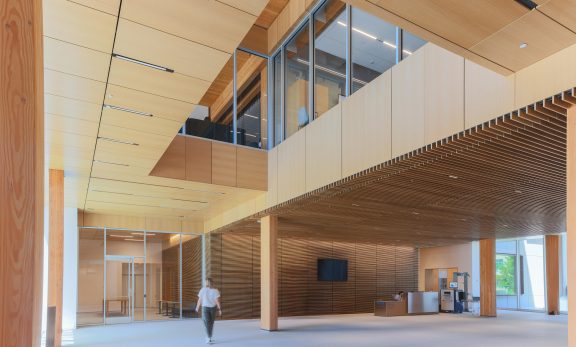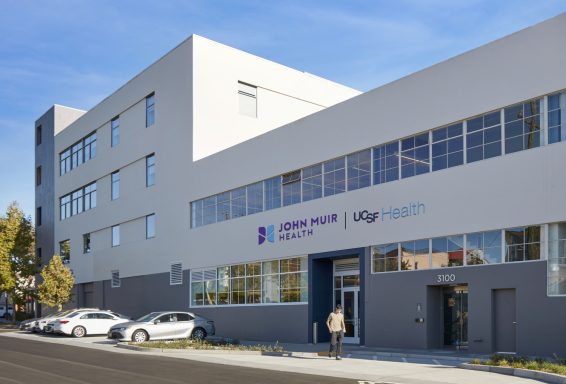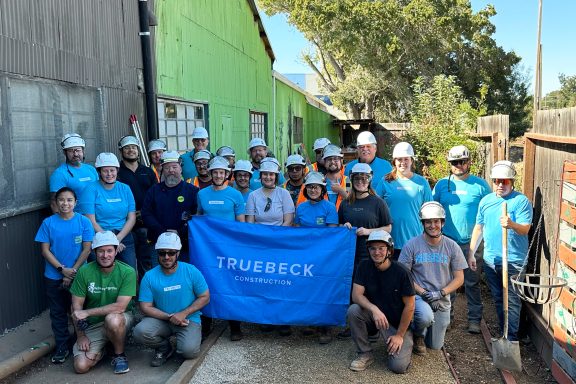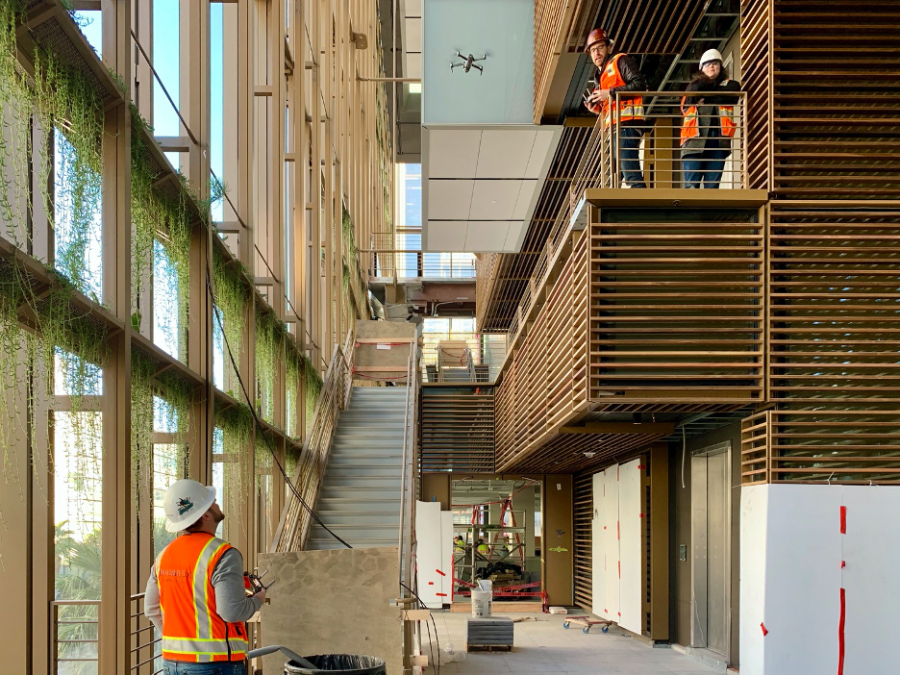
- Innovation
The Future of Drones in Construction
Michael Vachon, CTI Manager, steps out of the jobsite trailer with a small mechanical device tucked under his arm. Before him lies a massive corporate office under construction. The building is nearly complete, there only remains a few small tasks and punch list items from the architect.
Setting the small mechanical device on the ground, Vachon spreads the wings and with a few taps on his iPhone, the rotor blades begin to spin and soon the small drone lifts into the air. In mere seconds, the drone is above the construction site giving Vachon a bird’s eye view of the massive project. Vachon guides the drone down closer to the roof to view a specific area and snaps a few photos of some incomplete work.
The Rise of Drones in Construction
What once was an expensive piece of new technology is rapidly becoming a staple in the industry. It’s rare for a project to not see a few drones buzzing around taking aerial photographs.
But construction is currently only scratching the surface of the value drones bring to a project. Currently, drones are used primarily as a means of documentation and data gathering.
However, with the advent of COVID-19, drones are becoming the new way for teams to remotely monitor and walk project sights from the safety and comfort of their own workstations.
The Next Level in Drone Use
COVID-19 caused a massive shift in daily life and it spared no industry. The key to survival during a moment of crisis like this was to be agile and make rapid adjustments to construction. Chief among those adjustments for Truebeck was ensuring the safety of our team, trade partners, and clients.
Particular challenges arose when the architect on one Truebeck project had their team stationed in Southern California. At a time when social distancing and concerns over COVID-19 were at a peak and air travel was discouraged, how could the architect send their team to walk the site without compromising their safety?
A simple answer would be the construction team takes photos to shares, but photos can’t capture every detail and by the time an architect reviews the photo, it could be old. No, the solution needed to be in real-time and it needed to be able to freely explore a project.
Enter the next level of drone use: remote optics.
“Remote optics allows someone to stream the feed from a drone or a handheld camera so multiple users can view it at the same time,” shared Vachon. “I’m there flying the drone and the device—usually an iPad—that is helping manage and fly the drone is streaming through a 5G or 4G so everyone can view it from their web browser.”
With this new technology, the firm’s Construction, Innovation and Technology (CTI) team can allow project teams to connect with architects in ways never experienced before. These remote walks allow an architect to provide input in real-time.
“Our partners can direct where I fly the drone,” continued Vachon. “They can say, ‘Can you go back to that corner of the façade there and let’s zoom in on it to take a closer look.’”
Improved Quality
These real-time updates allow for the architect and client to do a quality inspection from their desk. How does this promote quality? It allows the architect in real-time to list items on the punch list.
A drone also allows an architect to view the project from angles that were unachievable or immensely difficult to witness. For example, a view of the project over a nearby highway or even an overhead view. Each of these angles can provide new insight into development and allow a general contractor and architect to ensure the project is moving in the desired vision of the client.
Furthermore, holding responsible parties accountable for incomplete or missing work is crucial. The ability to view work in areas that are inaccessible without heavy machinery lets the Truebeck team see first-hand if the work completed is at the expected standard.
Speaking about a corporate office project, Vachon said, “We were tracking progress in the terraces, and other intricate areas that are hard to reach. We were using drones to pause and take captures to present to trade partners during meetings. We could show them areas that weren’t done yet and it made it a lot easier to move the schedule along.”
Cut Costs
The obvious cost saving in this situation is travel expenses. The time it would take to send someone, and the costs associated with it are removed entirely, which means project teams and architects can maximize the budget on improving the value of the project, or they could simply put money back into the client’s pocket.
However, even just daily operations can be improved on the job site.
“Going up and walking out to each terrace over and over again every week would take a lot of time for a lot of people,” Vachon said.
As a general contractor, project teams spend numerous hours walking a job site, and while it may seem small initially, day after day, costs can add up. Once again, a single drone flight can cut on repetitive walks.
“But, if you have one drone fly up there, everyone can view whatever they need for their particular needs. They can see the film and share findings with trade partners.”
Safety Promotion
There is always an inherent risk in construction and Truebeck’s team is adamant on mitigating any safety hazards on a job site. The only way to completely remove risk is to not be actively on the job site.
With a drone that is possible. Truebeck’s project team can remotely inspect projects. No longer is there a need to acquire heavy machinery to view certain areas or to spend more time in the field.
“That’s what they would normally have to do,” Vachon said. “I was talking with project engineers about how they normally perform their punch walk on the exterior of the building. They would have to get on a boom lift of some sort and get up close and inspect it. Having a drone there, we can view it from my iPad. They can tell me exactly what they want to see as if they were there in person.”
Taking it Further
COVID-19 required companies to be more agile than ever before, and technology has consistently proven to be a life-saving tool. Truebeck’s embracing of this technology not only positions itself for survivability but for enhanced processes moving forward.
Current concerns won’t last. However, innovative solutions will. Even as today’s challenges abate, the adaptive use of drone technology will allow Truebeck to stay at the forefront of delivering projects with the best in service, value, and quality.
